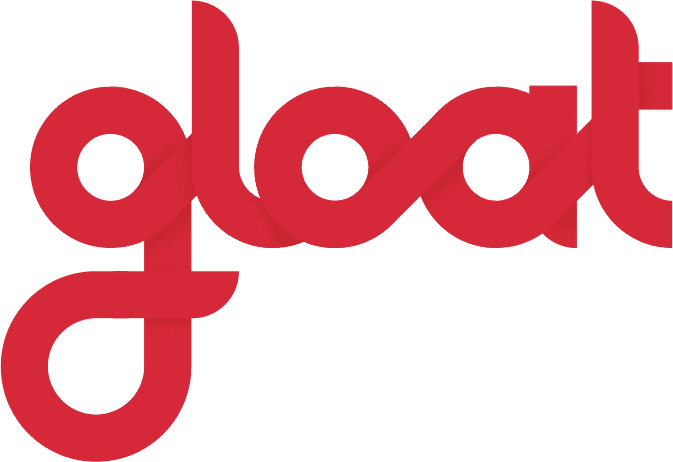June research round-up
What I am reading, listening to, and thinking about in the world of talent marketplaces and workforce intelligence

With the start of the second half of 2022 comes a palpable shift in attitudes, challenges, and business priorities. Most leaders see the warning signs of an impending slowdown and possible recession: inflation is rising, interest rates are up, supply chains are under pressure, and market turmoil is becoming a constant. Now that we’ve entered a bear market, businesses are preparing for the impact and looking for approaches to help their organizations lead through market uncertainty.
While tactics might vary, my sense is that winning strategies will have one thing in common: a commitment to making bold changes. Rather than forgetting the lessons learned during the onset of the COVID-19 pandemic, leaders must recognize the common threads connecting past turning points and harness these takeaways to carve their path forward.
Consequently, this month’s research roundup is dedicated to spotlighting the ideas that sit at the heart of today’s reimagination efforts. Themes like choice, talent agency, and workforce agility were crucial to overcoming previous hurdles, and they’ll be equally pivotal to preparing for and navigating the economic headwinds we’re facing today.
In short, the reimagination agenda is critical to preparing for economic headwinds and the future beyond it. On the heels of celebrating Gloat’s $90 million in Series D funding and the promise of turning workforce agility into a global reality for more companies, here’s what leaders need to be thinking about to prepare for the challenges ahead and capitalize on the opportunities that will follow.
READ What’s new in thought leadership about the future of work
Orchestrating Workforce Ecosystems and Contractors, Partners, Employees, Robots: The Art of Managing the New Blended Workforce, Forbes, by Joe McKendrick
The days of solely relying on full-time employees working strict 9-to-5 schedules are behind us. In the new world of work, employers must embrace more fluid work ecosystems comprised of contractors, freelancers, and partners, in addition to full-time team members. The transition to more dynamic ways of working will be underpinned by the rise of disruptive technology, including talent marketplaces and workforce intelligence. According to recent research, nearly one-third of businesses are already harnessing these platforms to match workers with available projects or stretch assignments. This research is summarized in a report, of which I’m a co-author, with MIT Sloan Management Review and Deloitte and highlighted in a recent article in Forbes. In short, the workforce is much more than our employees and activating workforce ecosystems will require changes to workforce management practices, technology, and how we lead and govern the human, and machine, ecosystem workforce.
US Job Jumpers Reconsider and Quit Again Soon After, Bloomberg, by Molly Smith
Bloomberg Editor Molly Smith sheds light on an intriguing trend that’s emerging as we enter year 2 of the Great Resignation: many employees who quit are searching for new opportunities yet again. Among workers who took a new job in 2021, the share who had been in their previous position for less than 12 months rose by 6.5% compared with the year prior. This data tells us that the employee-employer relationship is still very much in flux and that when it comes to finding meaningful careers, some workers continue to feel like they’re coming up short.
The Office Monsters are Trying to Claw Their Way Back to 2019, The New York Times, by Vivian Giang
Even amidst market uncertainty and shifts in business priorities, the struggle to fine-tune hybrid working arrangements continues. In her New York Times piece, writer Vivian Giang shines a spotlight on some leaders’ resistance to embracing more flexible work schemes. She notes that businesses that dig their heels in and stick to rigid policies may find themselves fighting a much larger cultural shift that is beyond their control.
Be Careful with the Lay-Offs, JoshBersin.com, by Josh Bersin
When it comes to navigating through economic headwinds, Josh Bersin offers leaders some straightforward talent management advice. He warns of the dangers of laying off employees, as these reductions permanently damage organizational culture and leave survivors grappling with a sense of shock and mistrust. While lay-offs may be unavoidable in certain scenarios, they should be viewed as a last resort. Bersin encourages leaders to get creative and consider shifting talent and reorganizing low-performing teams and moving them to higher-growth areas.
THINK What research and studies are saying about our path forward
Don’t want to lose your Gen Z and Millenial talent? Here’s what you can do, Deloitte, by Michele Parmelee
At many organizations, turnover troubles are becoming particularly pronounced amongst Gen Z and millennial employees. While workers of all generations are looking for choice, agency, and meaningful career paths, Deloitte’s research highlights some of the priorities that are going to be top of mind for younger generations. These considerations include reducing stress and burnout by creating better work-life balances, cultivating a positive culture that empowers all employees, and helping workers find more meaningful projects and responsibilities. In fact, nearly two in five employees within this age group report rejecting jobs or assignments that don’t align with their values. Hybrid working is another top priority, with approximately 75% of Gen Z and millennial employees noting that they would prefer more flexible work schemes.
The Collective Intelligence of Remote Teams, MIT Sloan Management Review, by Christoph Riedl, Thomas W. Malone, and Anita W. Woolley
Some leaders are focusing too heavily on where work gets done when they should really be thinking about how it’s being carried out and who is doing it, the authors of this MIT Sloan Management Review piece argue. They point to a study they conducted, in which researchers analyzed the results of more than 5,000 participants in over 1,300 groups across 22 different samples. The key finding? Group working remotely can be as effective as collaborating face to face. Similarly, there’s very little difference in the factors that explain the collective intelligence of the face-to-face and remote teams, suggesting both groups can work equally effectively on a wide range of tasks.
Tapping into Fluid Talent, Boston Consulting Group, by Nithya Vaduganathan, Colleen McDonald, Allison Bailey, and Renee Laverdiere
As workplace dynamics change and the global labor shortage continues, businesses must tap into what Boston Consulting Group refers to as “fluid talent”, such as former employees, freelancers, and workers in other departments. The authors go on to highlight several companies that are getting fluid talent management practices right, including one of Gloat’s earliest partners, Seagate. The piece details some of the results that the global data storage solutions provider has achieved with its platform, including an estimated 35,000 unlocked hours and $1.4 million in savings in just four months.
How Virtual Work is Accelerating Innovation, McKinsey, by Federico Berruti, Alex Morris, Gisele Ho, Phil Kirschner, Sophie Norman, and Erik Roth
It’s not your imagination—innovation and digitization have been happening at a record-breaking pace over the past few years. This McKinsey article explores how this surge in innovation is impacting the way we work, and the benefits that businesses are reaping from it. Most notably, innovative companies are tapping virtual work to attract more specialized and diverse talent, in turn cultivating more inclusive workforces. Additionally, some organizations are achieving productivity gains by recognizing that virtual teams can avoid unnecessary distractions and experience more effective and uninterrupted workflows.
Rise of the relatable organization, Global Talent Trends Study 2022, Mercer
After surveying 11,000 C-suite executives, HR leaders, and employees, Mercer’s latest Global Talent Trends Study reveals something important about what organizations need to do to succeed in the new world of work: maintain a focus on becoming more human, and in turn, more relatable. Their research spotlights five key trends, which include:
- Resetting for relevance
Embracing new work operating systems to attract and retain talent by reflecting their values - Work in partnership
Empower employees to work collaboratively and cross-functionally, both within and outside their organization - Deliver on total wellbeing
Engage the whole person to drive sustainability and encourage healthy behaviors - Build for employability
Build pathways to prosperity by becoming a skills-based organization - Harness collective energy
Design human-centric work experiences and build a relatable People function
CONNECT What future-fit organizations and leaders are talking about
Great business decisions often require imagination more than data, Linkedin, by Roger Martin
While there’s no doubt that strategic business decisions hinge on data, leaders can’t overlook the importance of imagination and interpretation. Rather than taking a purely scientific approach to decision-making, managers must consider all possibilities and imagine every potential outcome. Martin argues that the most innovative organizations will be the companies that recognize that the division between can and cannot is surprisingly fluid.
6 Steps to Work Through Staff Shortages, Gartner for HR
Many leaders are starting to feel the stress of staffing shortages. And while there’s plenty to read on the subject, sometimes it helps to have a quick breakdown of what you can do, which is exactly what Gartner provides. Their infographic shows six steps that businesses can take to work through labor shortages and highlights smoothing out internal mobility as one of the first actions that leaders should take.
The Future of Work, Minds and Tech stage, featuring Gianni Giacomelli on Superminds
A great talk on superminds and the power of teams and technology working together. Gianni Giacomelli, the head of innovation at Genpact and a global researcher on superminds with MIT’s Center for Collective Intelligence, lays out the power of shared knowledge, teams, and collaboration and their application to reskilling an organization with 90,000 employees. An inspiring talk on human, machine, and network collaboration.
The Top 25 Software Leaders of New York in 2022, The Software Report
Last, but certainly not least, I’d like to give a special shoutout to Gloat’s Chief Marketing and Product Officer, Danny Shteinberg, who was recently named one of the top 25 software leaders in New York. As market uncertainty surges and the demand for workforce agility platforms increases, it’s exciting to see Gloat’s co-founders getting recognized for their bold vision and the game-changing technology they’re bringing to life.
Let us know what you would add to our list.





